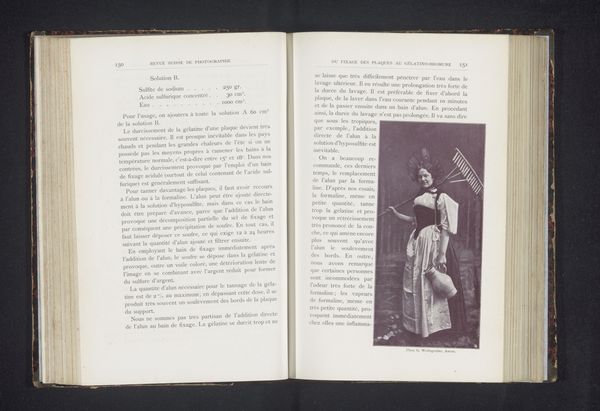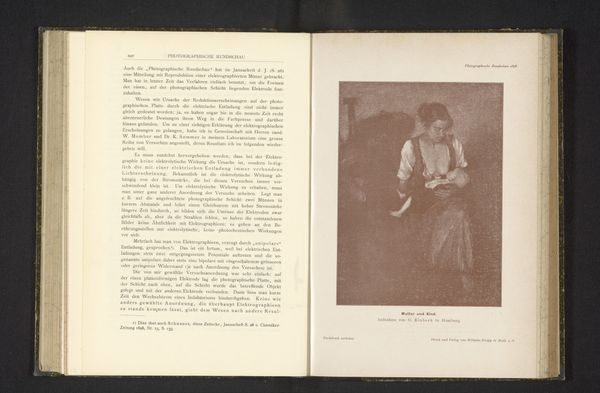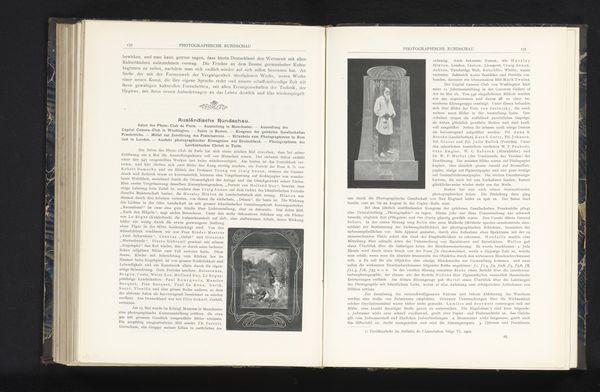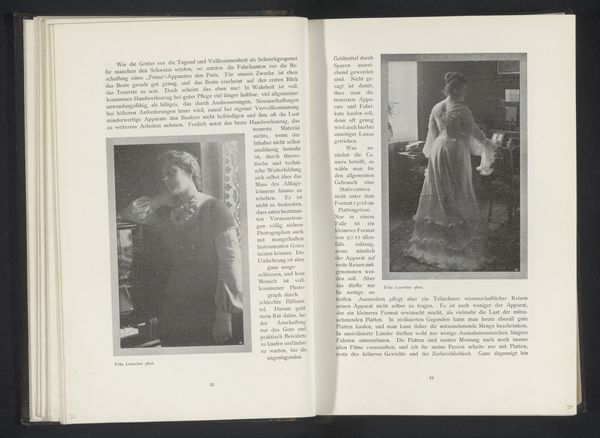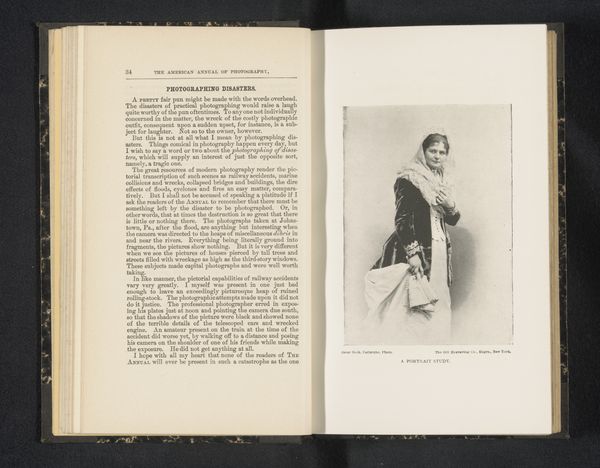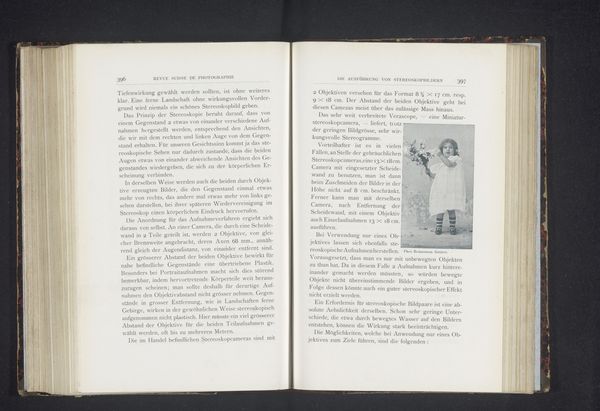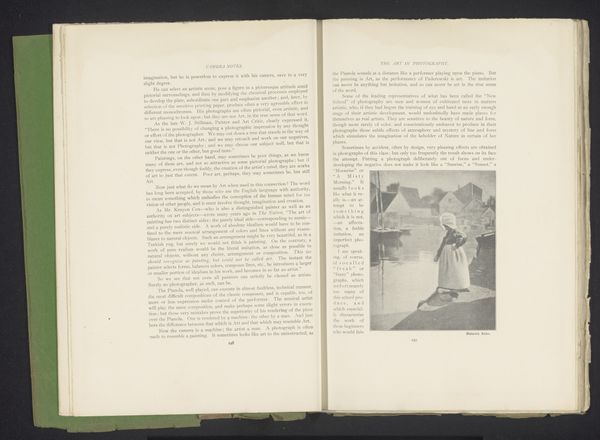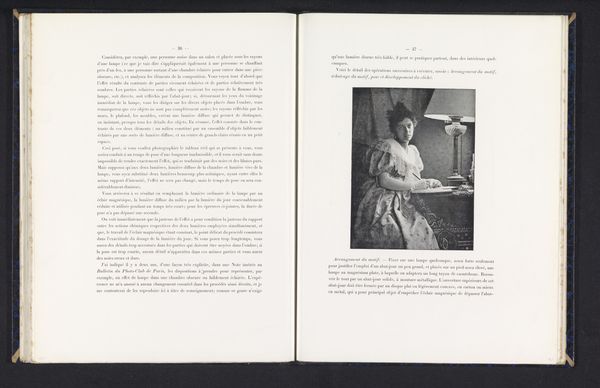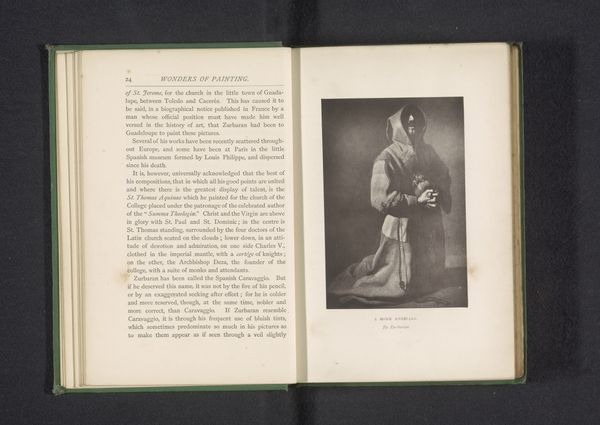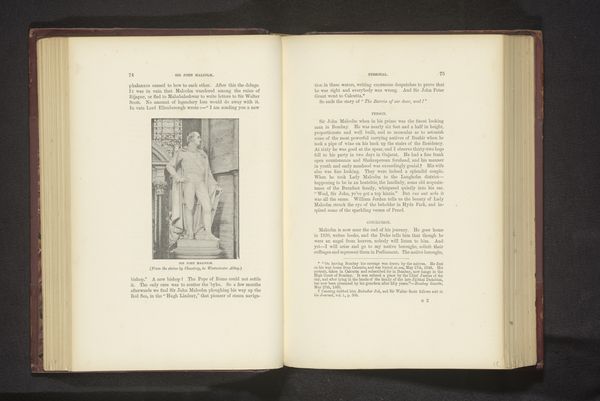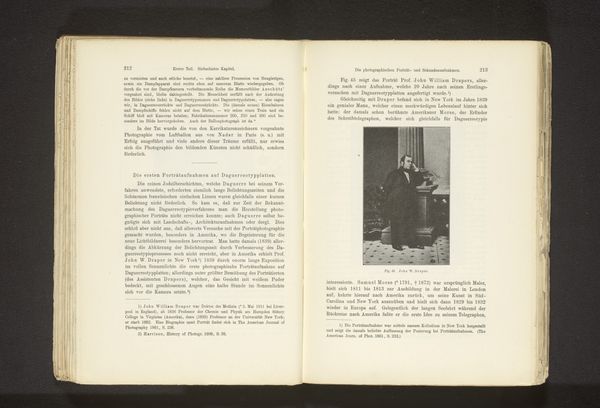
print, photography
#
portrait
#
script typeface
#
pictorialism
#
paperlike
# print
#
editorial typography
#
photography
#
photojournalism
#
thick font
#
publication mockup
#
handwritten font
#
classical type
#
thin font
#
publication design
#
small font
Dimensions: height 131 mm, width 84 mm
Copyright: Rijks Museum: Open Domain
Curator: Here we have "Portret van een onbekende vrouw," or "Portrait of an Unknown Woman," captured sometime before 1903 by Alfred Kirstein. It exemplifies pictorialism in photography. What strikes you about it? Editor: It feels almost dreamlike. There’s a soft focus that gives the whole scene a romantic air. She seems so absorbed in whatever she's reading. There is a real intimacy about it, and that makes me feel immediately curious about her. Curator: Kirstein’s work often appeared in publications focused on art and photography. Pictorialism, the movement this photograph represents, aimed to elevate photography to the level of art, much like painting. The soft focus, the careful composition—all designed to evoke a particular mood. Editor: It’s funny you mention painting. This actually reminds me of some Impressionist portraits, with the way the light gently blurs the edges. This could easily be a Degas pastel! Do you think he intended for photography to be accepted more as an art form or did he also have aspirations to make his images like those paintings? Curator: That is a good point! Pictorialist photographers drew heavily on painting, both in terms of aesthetics and subject matter. They were trying to demonstrate the artistic potential of photography at a time when it was often considered a purely mechanical process, and emulating painting was definitely one way to gain acceptance. I find the placement in a publication telling too, it almost lends credence and gives it a platform. Editor: That makes perfect sense! It's all about positioning, isn't it? And even though this woman is technically “unknown,” the way she's been presented elevates her, grants her a certain timeless significance, that is often achieved when featured in popular press. The very act of framing her within art elevates and almost immortalizes her, as if for the simple act of being printed on the page with care, she must matter. Curator: Exactly. And by publishing images such as this one, periodicals contributed to defining what and who mattered, constructing a cultural pantheon, of sorts. Kirstein's photography played an active part in creating these lasting legacies. Editor: That's such a great point about constructing culture through imagery! Makes me appreciate this small window into the past even more. Curator: Indeed, the intersection of photography, print media, and art history gives "Portrait of an Unknown Woman" layers of meaning that still resonate today.
Comments
No comments
Be the first to comment and join the conversation on the ultimate creative platform.

